There are different types of fans used in our homes and in industrial applications. The fan can be used to cool the room or to change the air. Before knowing about the different types of fans, we will know about the importance of fans.
Fans cool us down when it’s hot. They blow air and create a breeze that makes us feel better. They also move the air in a room to make it feel fresh.
Fans help make the air cleaner by blowing away smells and smoke. They bring in new, fresh air from outside and get rid of old, stuffy air.
Fans save energy and money. They use less electricity than air conditioners. They are great for cooling small spaces or ourselves.
Fans make us more comfortable by reducing heat and stickiness in a room. They also create a soft noise that helps us sleep or relax.
Fans help things dry faster. If something is wet, like a carpet or a painted wall, a fan can blow air on it to make it dry quicker. This is important because wet things can cause mold and make us sick.
Fans keep bugs away. When a fan blows air, it makes it harder for insects to fly or land on us. So, we have fewer bugs bothering us.
Fans can be fun! We can use them to cheer for our favorite team or show our excitement. They can also add beauty to a room.
In factories and big buildings, fans are important for cooling machines and keeping them safe. They also clean the air and ensure everyone can breathe easily.
Fans work outside too. There are special fans for outdoor spaces like patios or porches. They make being outside more enjoyable.
Table of Contents
Various Types Of Fans
1. Ceiling Fan:
A ceiling fan is a mechanical device suspended from the ceiling of a room that is designed to circulate air and provide cooling. It consists of a motor housing, fan blades, and a mounting system. Ceiling fans come in various sizes and styles, ranging from small to large, and are known for their energy efficiency, versatility in design, and durability with minimal maintenance requirements.
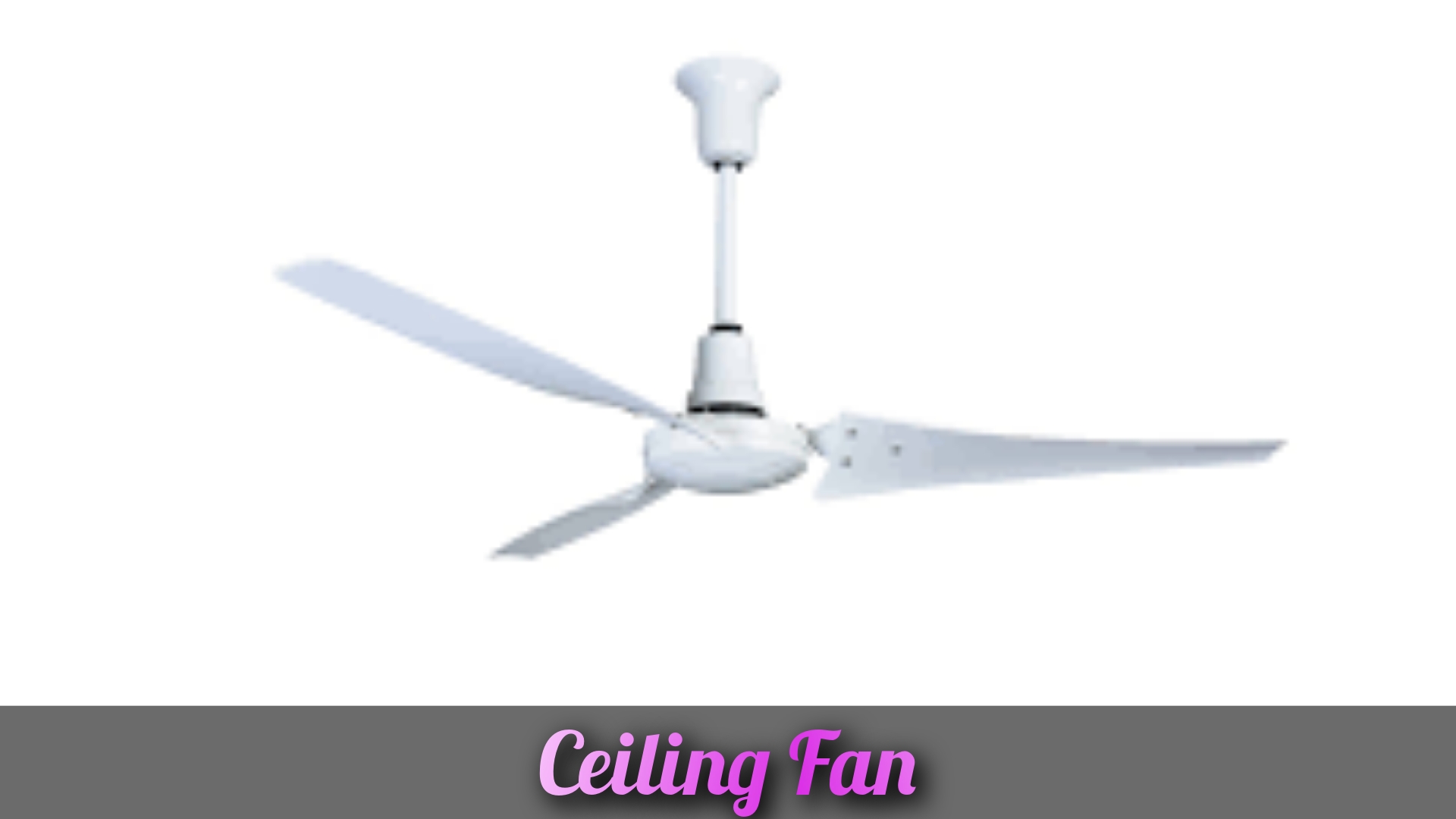
They offer a cost-effective cooling solution and can be a stylish addition to any interior decor
2. Table Fan:
A table fan is a fan that you can place on a table or desk. It comes in two main types: traditional desk fans and air circulators.
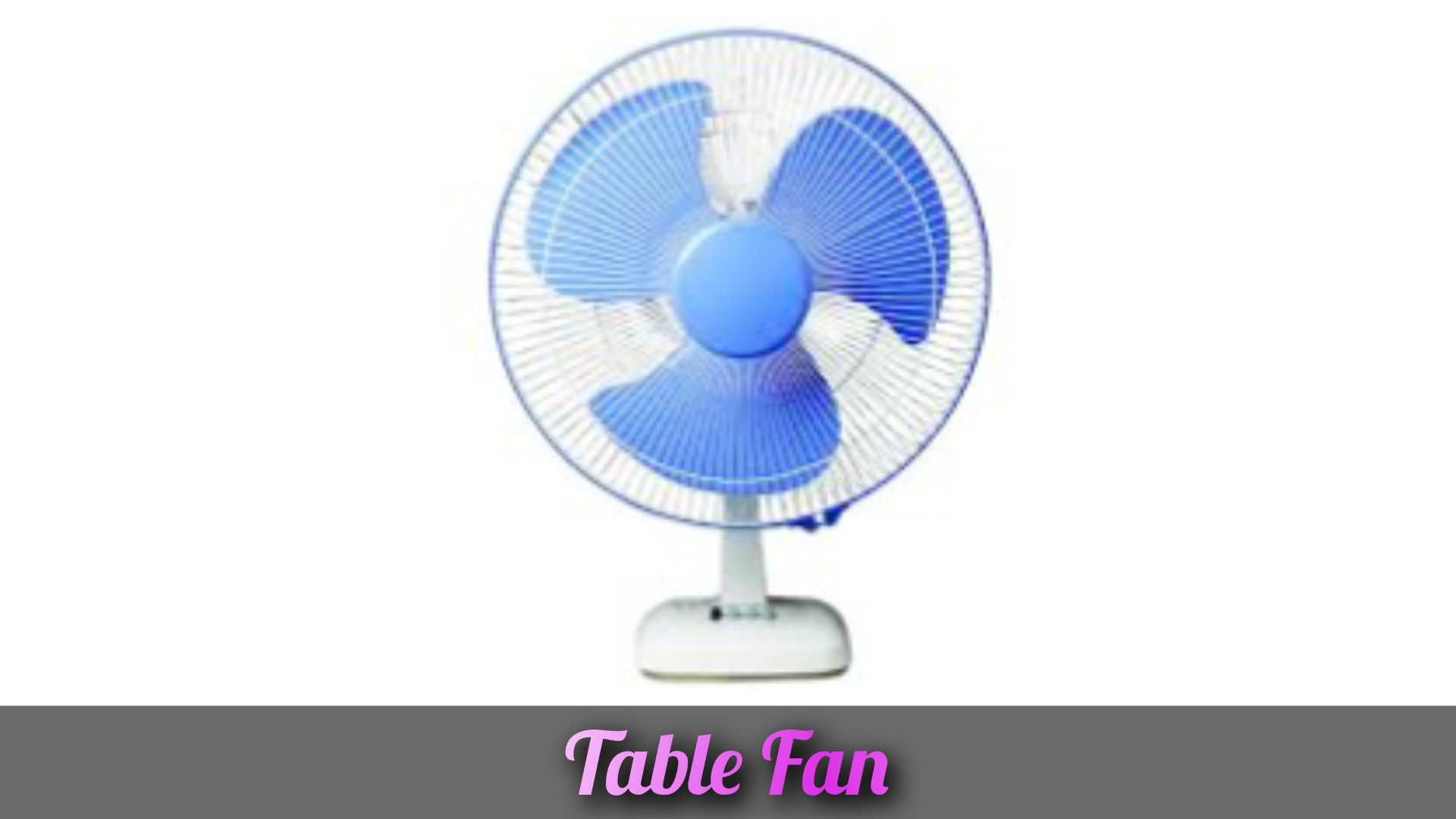
The traditional desk fan has blades and comes in different sizes, usually between 6 to 12 inches. It has three speed options, and you can plug it into an electrical outlet using its cord. This fan is good for medium-sized spaces. It is affordable, uses less electricity, and is easy to operate. You need to clean it regularly to keep it working properly.
Air circulators are powerful desk fans, sometimes called high-velocity desk fans. They are a bit more expensive than traditional desk fans and work well in small, compact, and humid office environments.
Table fans have advantages. They are affordable to buy and use less electricity, helping you save on energy bills. They are easy to operate and don’t require much maintenance. They improve air circulation and enhance air quality by reducing stagnant air. They don’t take up much space and don’t require mounting or installation like ceiling fans.
However, table fans have a few disadvantages. They can only provide limited cooling, so they may not be enough for larger rooms or open-plan spaces. You need to clean and maintain them regularly.
3. Floor Fan:
A floor fan is a special kind of fan that you can put on the floor. It helps move air around to make a room feel cooler. It has a big fan blade inside a protective cover and a strong base to keep it steady.
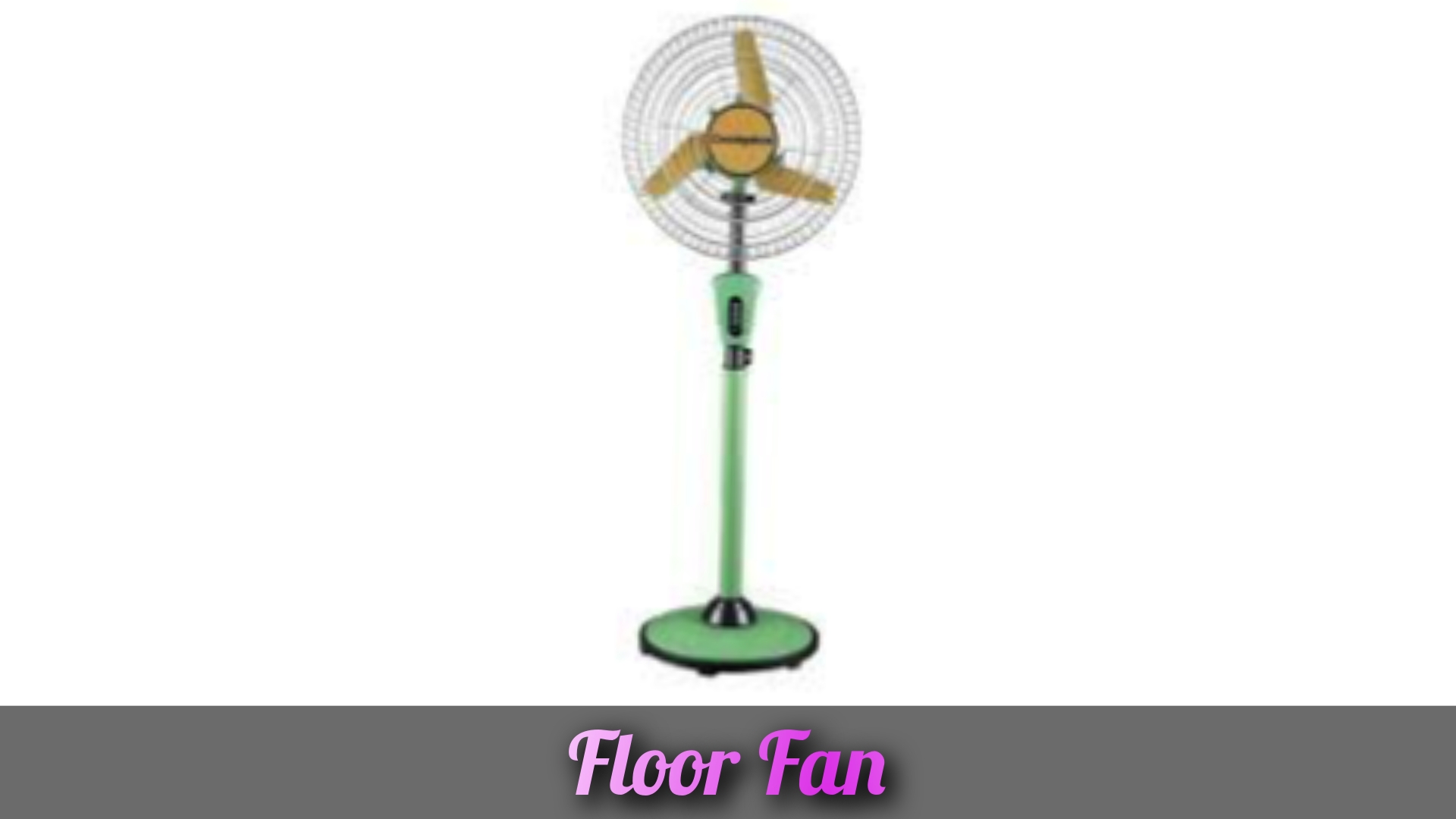
Floor fans are useful when it’s hot and you don’t have air conditioning or when you need more air to move around. They can make a room feel less stuffy and more comfortable.
You can control how fast the fan blows by changing the speed. Some floor fans can also move from side to side to blow air in different directions.
Floor fans come in different sizes and shapes. Some are small for personal use, and others are bigger for places like offices or factories. They are easy to move around because they are not too heavy. Some floor fans can even change their height or be controlled by a remote.
4. Tower Fan:
A tower fan is a special kind of electric fan that looks tall and slim like a tower. It has a motorized fan inside a long, upright case. Tower fans are great because they save space and move air very well.
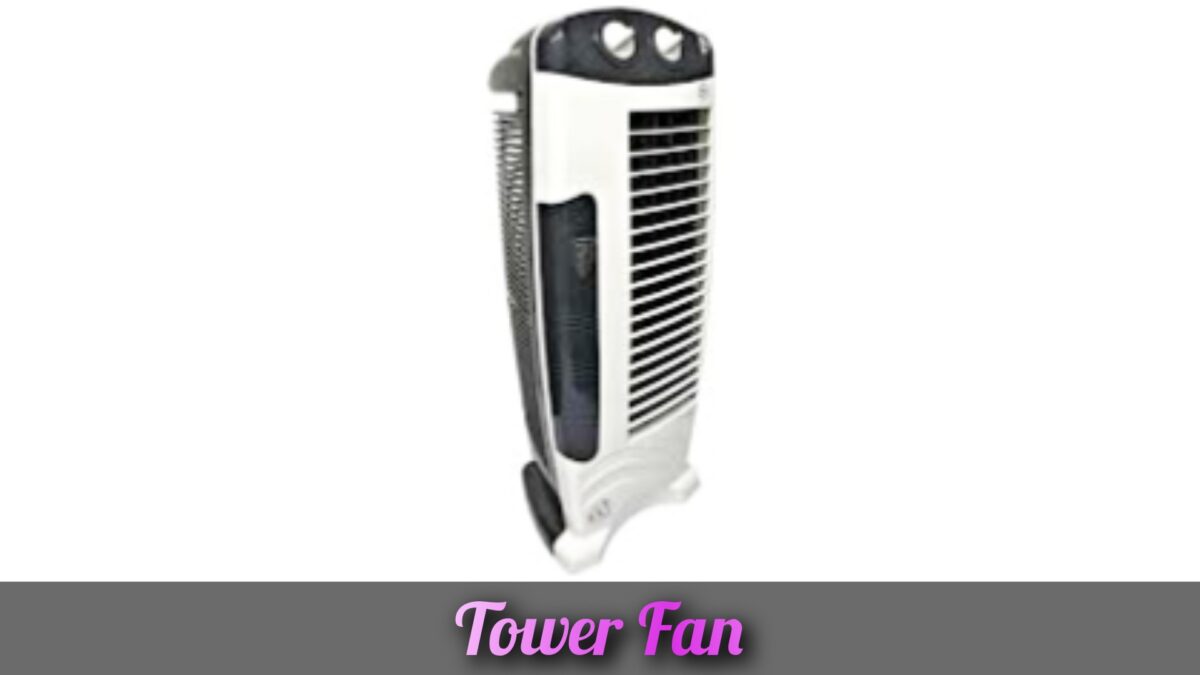
Tower fans work differently from regular fans. Instead of blowing air in all directions, they blow air up and down in a straight line. They also move from side to side to cover a bigger area. Tower fans can have different speeds and can move from side to side or stay in one place. You can choose how you want the air to move. Some tower fans have timers, remote controls, and you can even make them taller or shorter.
People use tower fans in houses, offices, and other indoor places to keep cool or get air moving. Tower fans are quieter than other fans, so they are good for bedrooms or quiet places. They also look modern and sleek, so they fit nicely with different kinds of rooms.
Remember, tower fans don’t cool the air like air conditioners do. They just move air around and make it feel cooler by creating a breeze. It’s like when you wave a fan in front of your face and it feels nice.
5. Wall-Mounted Fan:
A wall-mounted fan is a fan that you can put on the wall. It helps make the air move around in a room. You don’t have to keep it on a table or the floor.
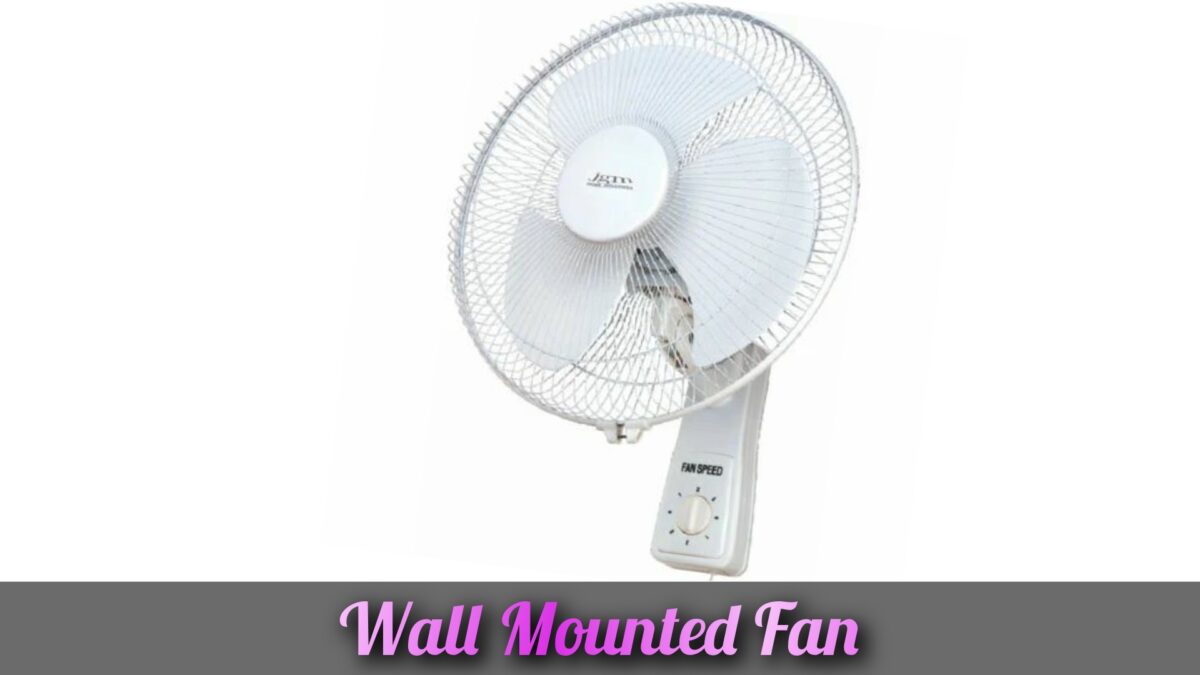
To put it on the wall, you use special brackets or parts. You can decide how high and which way it should face.
There are different sizes and types of wall-mounted fans. Some are small and good for homes, while others are big and used in places like schools or gyms. The fans can move from side to side, so the air reaches more places. Some fans also have buttons to change how fast they blow air or set a timer.
People use wall-mounted fans to cool down a room, make the air move, and make it more comfortable. You can find them in homes, offices, schools, and other places where there isn’t a lot of space on the floor or table.
6. Pedestal Fan:
A pedestal fan is a fan that you put on the floor or a stand. It has a motor and a round fan head attached to a long pole. The pole is connected to a sturdy base that keeps the fan stable.
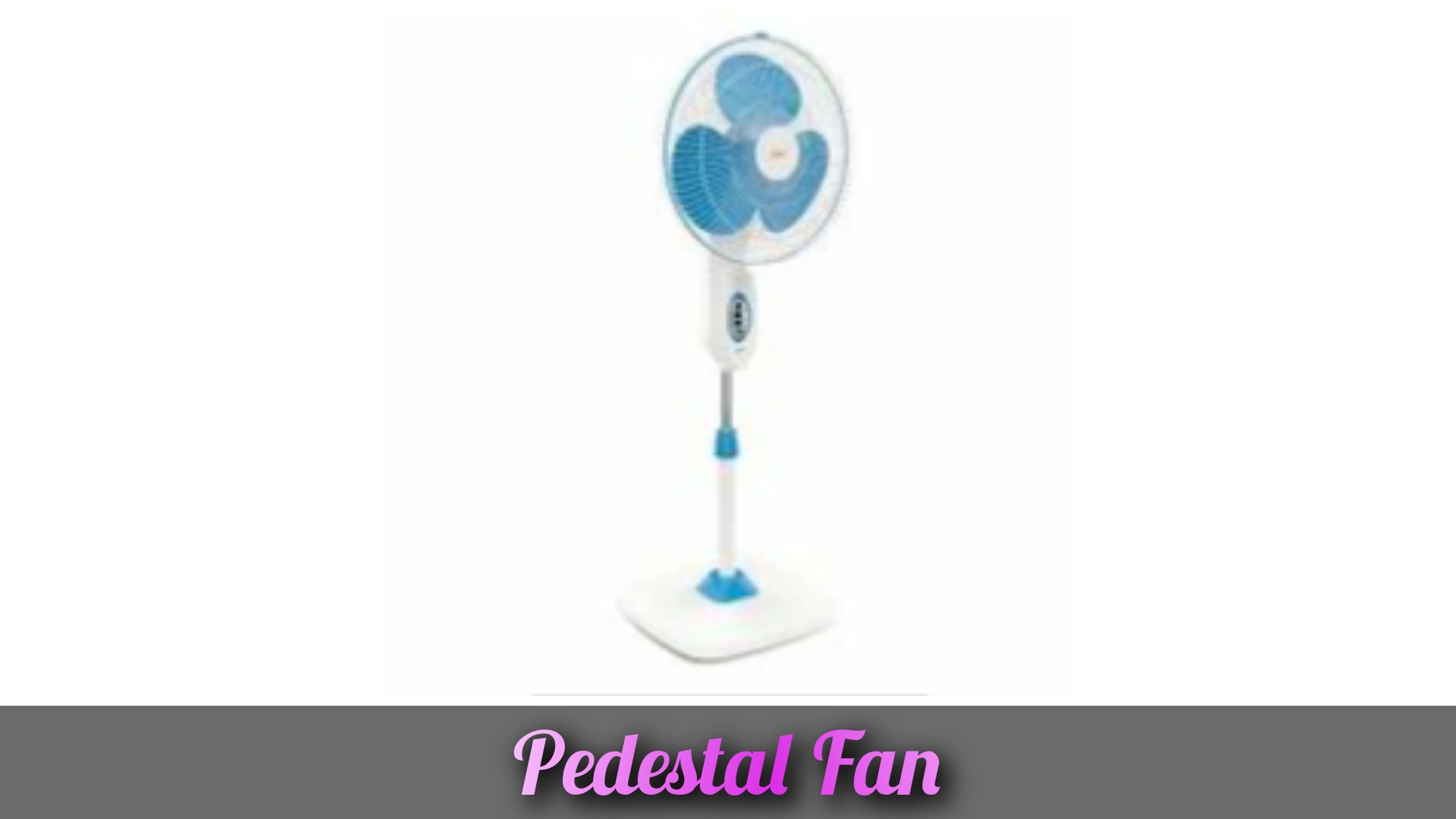
Pedestal fans are great because they blow air and make you feel cool. You can change the height of the fan and make it higher or lower. The fan head can move from side to side to blow air all around the room.
These fans have different speeds, so you can choose how fast you want the air to blow. Some fans also have remote controls, timers, and adjustable fan heads.
People use pedestal fans in houses, offices, gyms, and other indoor places when they want to feel cool. They are easy to move around and don’t cost as much as air conditioning.
7. Window Fan:
A window fan is a device that helps to circulate air inside a room. It is designed to fit in a window frame, allowing it to draw in fresh air from outside and push out stale air from inside.
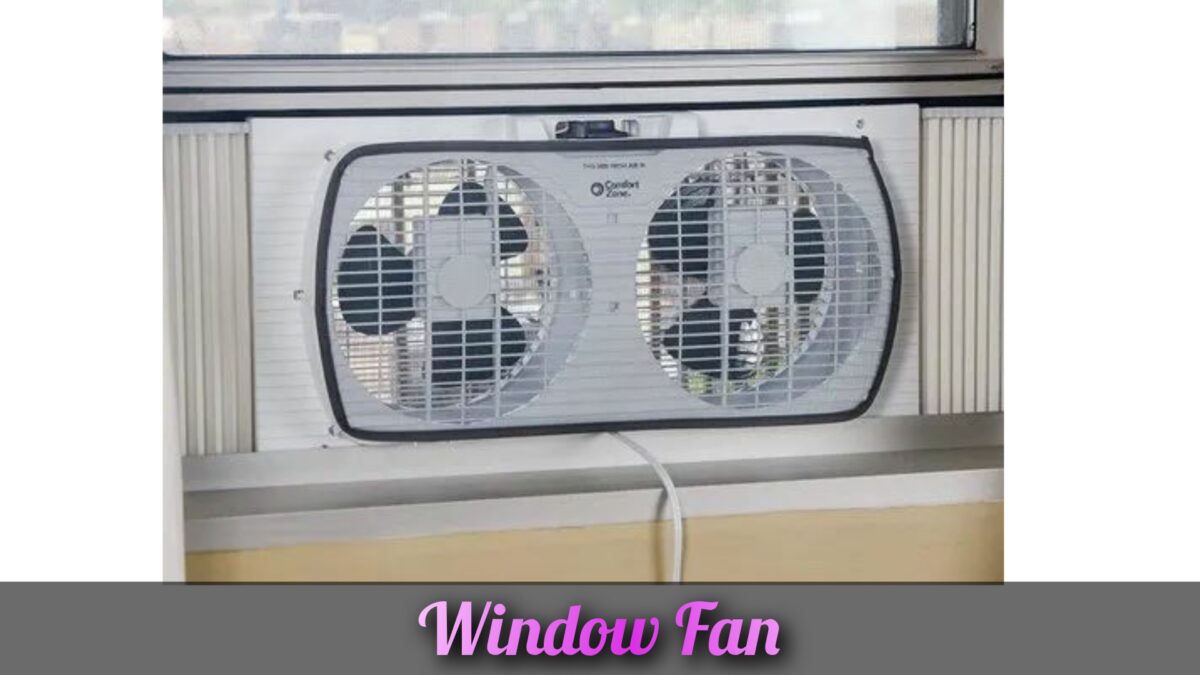
The fan has blades or vents that spin when turned on, creating a breeze that can make the room cooler and more comfortable. It’s like having a small, portable air conditioner that you can place in your window to bring in fresh air and keep the room well-ventilated.
8. Box Fan:
A box fan is a fan that you can move around. It has a special box shape. Inside the box, there are blades that spin when you turn it on. The spinning blades create a cool breeze that helps make the room feel cooler.
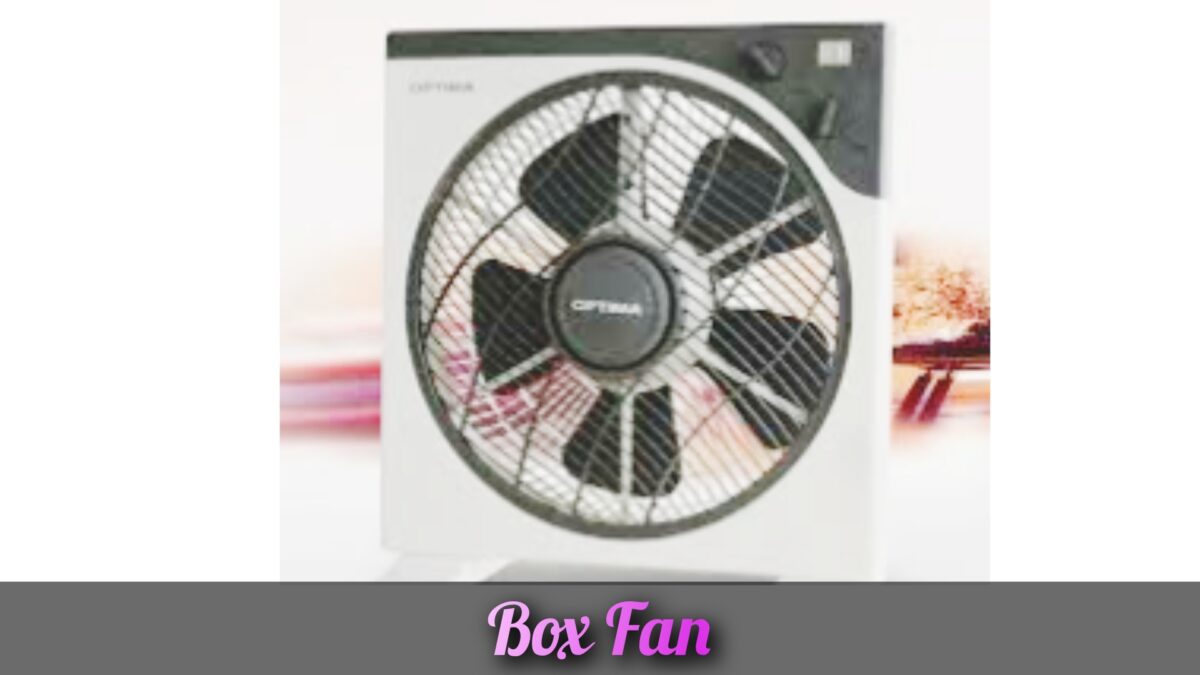
You can put the box fan on the floor or in a window to bring in fresh air or move the air around. Box fans are simple to use and can be a helpful way to stay cool, especially when it’s hot outside.
9. Attic Fan:
An attic fan is a type of ventilation fan that helps regulate the temperature of a building’s attic by expelling hot air. It is equipped with a thermostat that automatically switches the fan on and off, and in some cases, there may also be a manual switch for control.
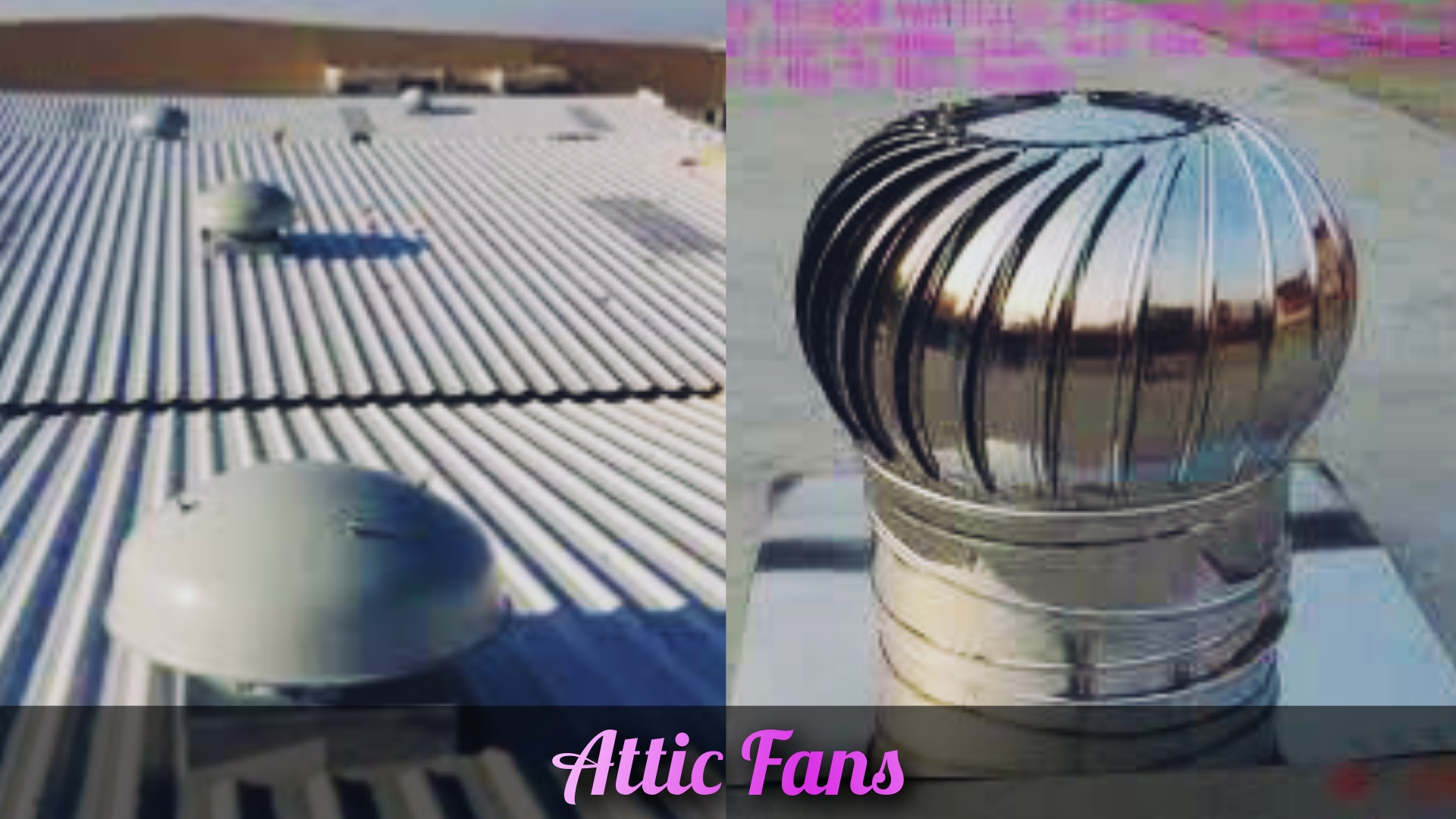
Attic fans can be either gable mounted or roof mounted. To allow the hot air to escape, additional vents are necessary to draw in fresh air. These fans are typically used during the warmer months when the temperature inside an attic can rise above 120 °F (49 °C). In some cases, an attic fan may be installed to cool an entire house by venting hot air out through the attic. Such fans are commonly known as whole-house fans.
There are different methods of powering attic ventilation fans. The majority of residential attic ventilators are connected to the electrical grid. However, there is a growing trend towards using solar-powered attic ventilators as a means of conserving electricity and reducing monthly utility bills. Additionally, wind-powered roof turbines, sometimes referred to as “whirly-birds,” are also utilized to ventilate attics and other enclosed spaces.
By employing attic fans, homeowners can effectively manage the heat levels in their attics, preventing the accumulation of hot air and potentially reducing the need for excessive air conditioning.
10. Extractor Fan Or Exhaust Fan:
An extractor fan is a special fan that helps remove unwanted air, smells, and dampness from certain rooms in our home, like the kitchen and bathroom.
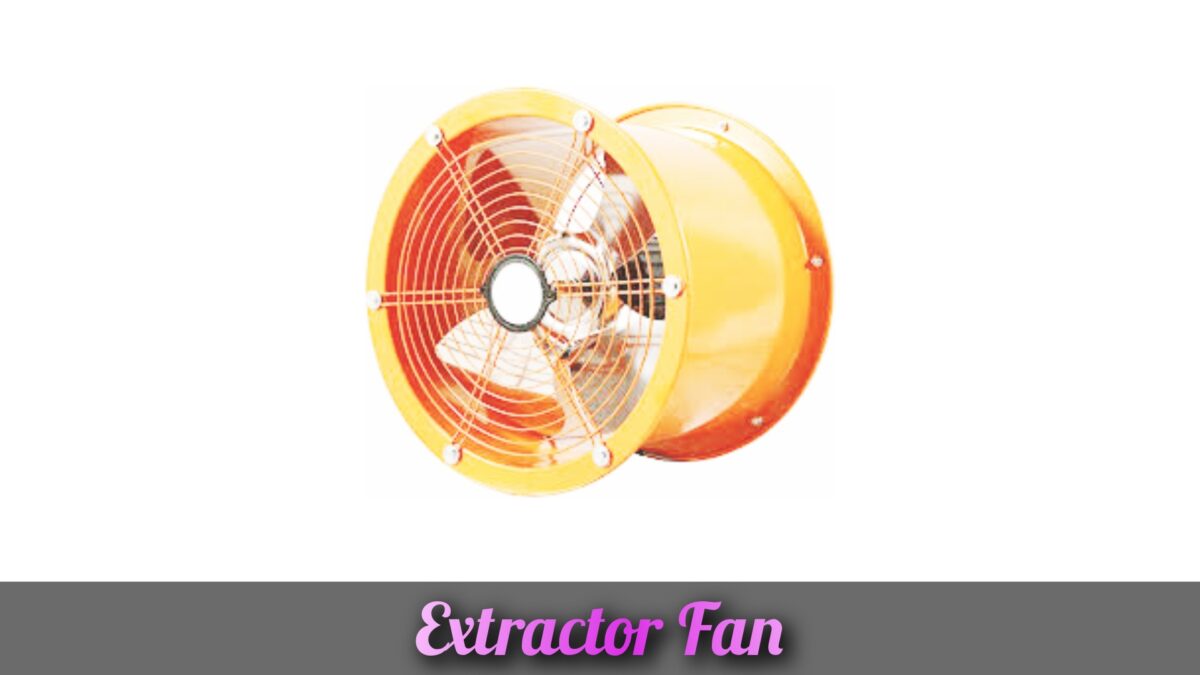
The fan works by sucking the bad air out through a special pipe or vent and blowing it outside. It uses electricity to make its blades spin really fast, creating a strong wind that pulls the yucky air out of the room.
The extractor fan is like a superhero for our home because it helps get rid of things that can make us uncomfortable, like steam from a hot shower or the smell of burnt food. It also helps keep our home fresh and clean by getting rid of bad odors and stopping mold from growing.
So, whenever we turn on the extractor fan, it starts working hard to make the air in our home nice and fresh again.
11. Industrial Fan:
An industrial fan is a strong and efficient heavy duty fan created specifically for use in industrial environments. Its main purpose is to move air, promote airflow, and cool down extensive spaces like warehouses, factories, and workshops.
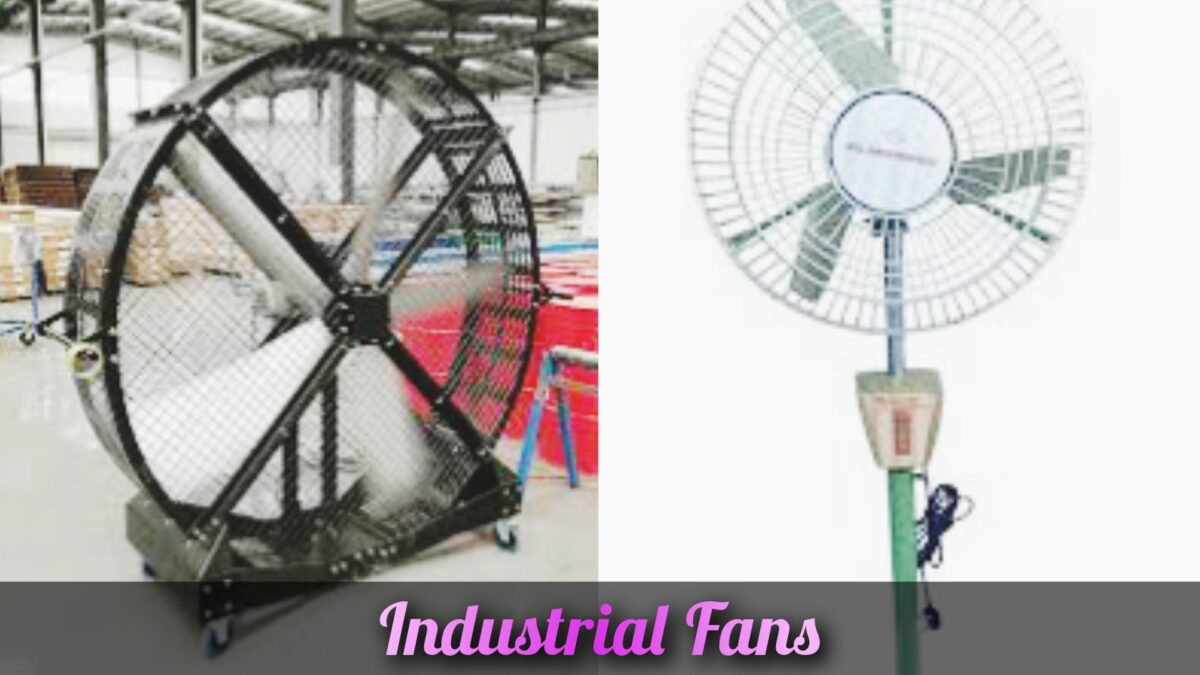
Industrial fans are designed to be long-lasting, capable of handling large amounts of air, and resistant to tough conditions. They play a vital role in maintaining proper ventilation, preventing excessive heat, and ensuring a safe and productive working environment in industrial areas.
12. HVLS Fan:
Full Form of HVLS is High Volume, Low Speed. An HVLS fan is a type of industrial fan specifically designed to move a large volume of air at a low rotational speed. These fans are commonly found in expansive settings like warehouses, manufacturing facilities, gymnasiums, airports, and other commercial or industrial environments.
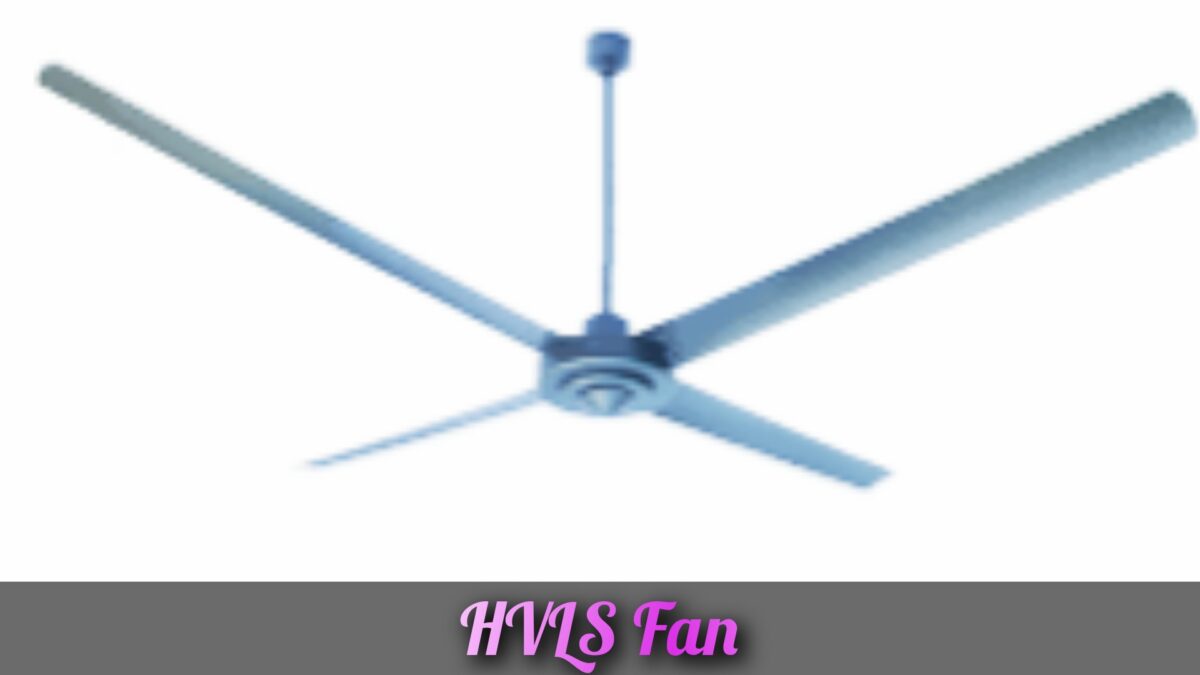
HVLS fans are characterized by their substantial size, often ranging from 7 to 24 feet (2 to 7.3 meters) in diameter. They feature long, aerodynamically designed blades that rotate at a slow pace, typically between 20 and 150 revolutions per minute (RPM). Despite their impressive dimensions, HVLS fans are energy-efficient and capable of circulating a significant amount of air, generating a gentle breeze throughout the area.
The primary purpose of HVLS fans is to enhance air movement and create a more comfortable atmosphere for occupants. By moving a large volume of air at a low speed, these fans help alleviate stagnant air, prevent temperature variations, and produce a cooling effect by facilitating increased evaporation from the skin’s surface. Additionally, HVLS fans can improve ventilation, diminish humidity, and enhance overall air quality within expansive spaces.
Compared to conventional high-speed fans or air conditioning systems, HVLS fans tend to be more energy-efficient and cost-effective. By reducing reliance on air conditioning, particularly in areas with high ceilings where inadequate air circulation and temperature stratification are common issues, HVLS fans can yield significant energy savings.
13. Misting Fan:
A misting fan is a special fan that helps us feel cooler on hot days. It sprays tiny drops of water in the air and then blows them towards us. When these little water droplets touch our skin, they quickly disappear, taking away some of the heat from our bodies and making us feel refreshed.
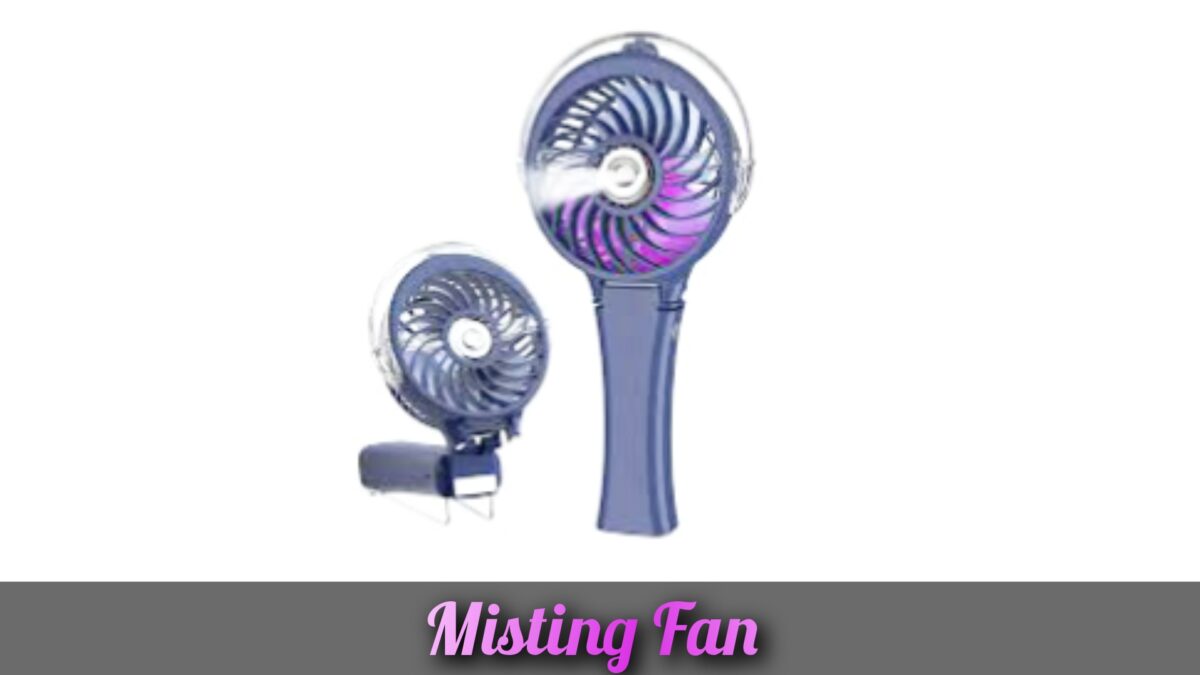
Misting fans are great for when we’re playing outside, having a picnic, or watching a game in a big stadium. They can also be used in big buildings or factories to cool down the air. Some misting fans can be plugged into the wall, while others use batteries to work.
Misting fans are not as powerful as air conditioners, but they can make us feel much better when it’s really hot outside. They are a fun way to stay cool and enjoy the summer!
14. Outdoor Fan:
An outdoor fan is a special kind of fan that you can use outside. It’s made to work even when it’s rainy or sunny. You can put it in places like your backyard or porch. The fan blows air and makes you feel cooler when it’s hot outside.
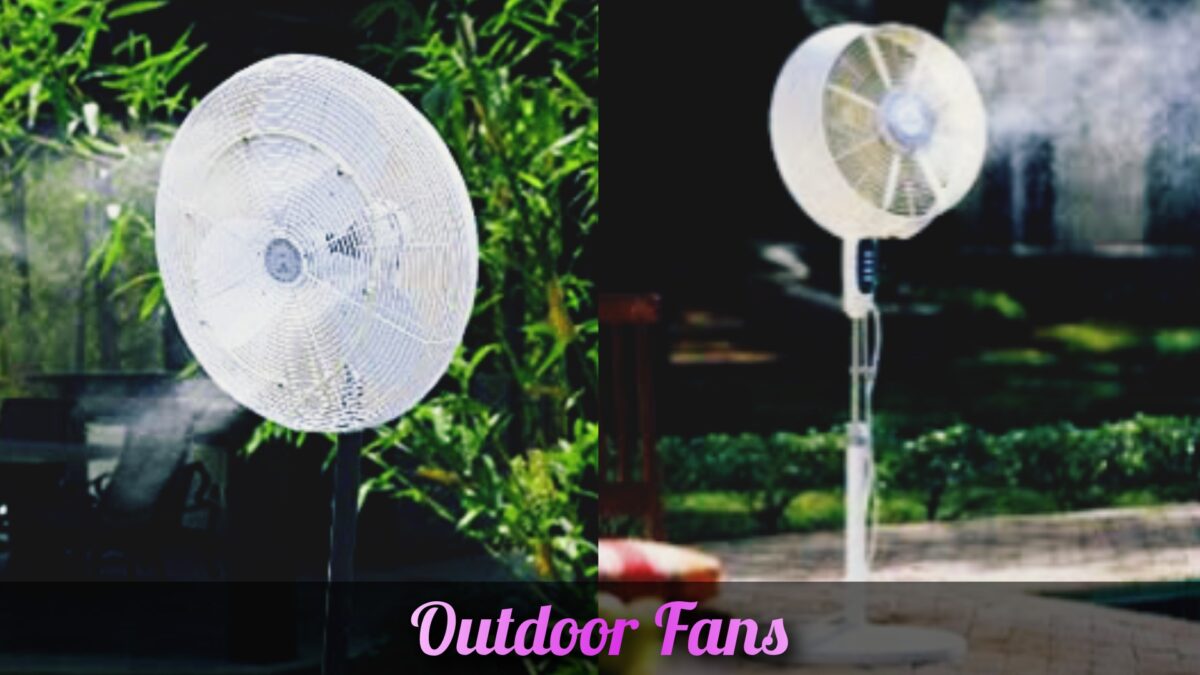
Outdoor fans are different from the fans you use inside your house. They are built to be strong and not get damaged by the weather. They are made with tough materials like metal or strong plastic. The blades of the fan have a special coating to keep them from rusting.
Some outdoor fans have extra things like lights or a way to spray water to make you even cooler. They come in different sizes and styles, so you can choose one that you like.
When you put up an outdoor fan, it’s important to do it the right way. You should follow the instructions that come with the fan and make sure it’s connected to the electricity correctly. This will keep you safe and make the fan work well.
15. Handheld Fan:
A handheld fan is a little device that you can hold in your hand. It’s like a small fan that you can carry around with you. When you turn it on, it makes the air move and creates a nice breeze to help you feel cooler.
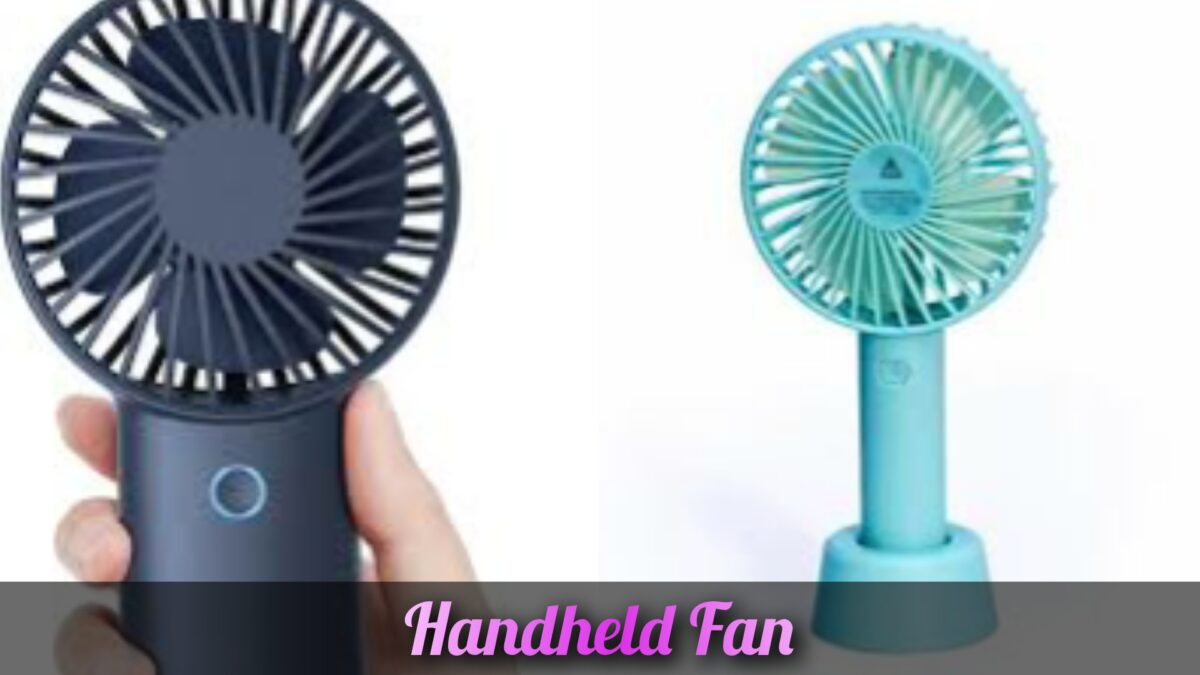
It’s really handy when it’s hot outside or when you’re feeling hot and need some relief. You can easily hold it and use it by pressing a button or switch. Some fans have batteries inside them, while others can be charged using a special cable. Handheld fans come in different shapes and colors, and some can even fold up. They are great to have when you’re outside, traveling, or when there’s no electricity.
16. Bladeless Fan:
A bladeless fan is a special kind of fan that doesn’t have spinning blades like the ones you usually see. Instead, it works in a different way to make air move. It looks like a round or loop-shaped tube. When you turn it on, it sucks in air and makes it go really fast. Then, the fast air comes out through a small opening, and that’s how it creates a nice breeze.
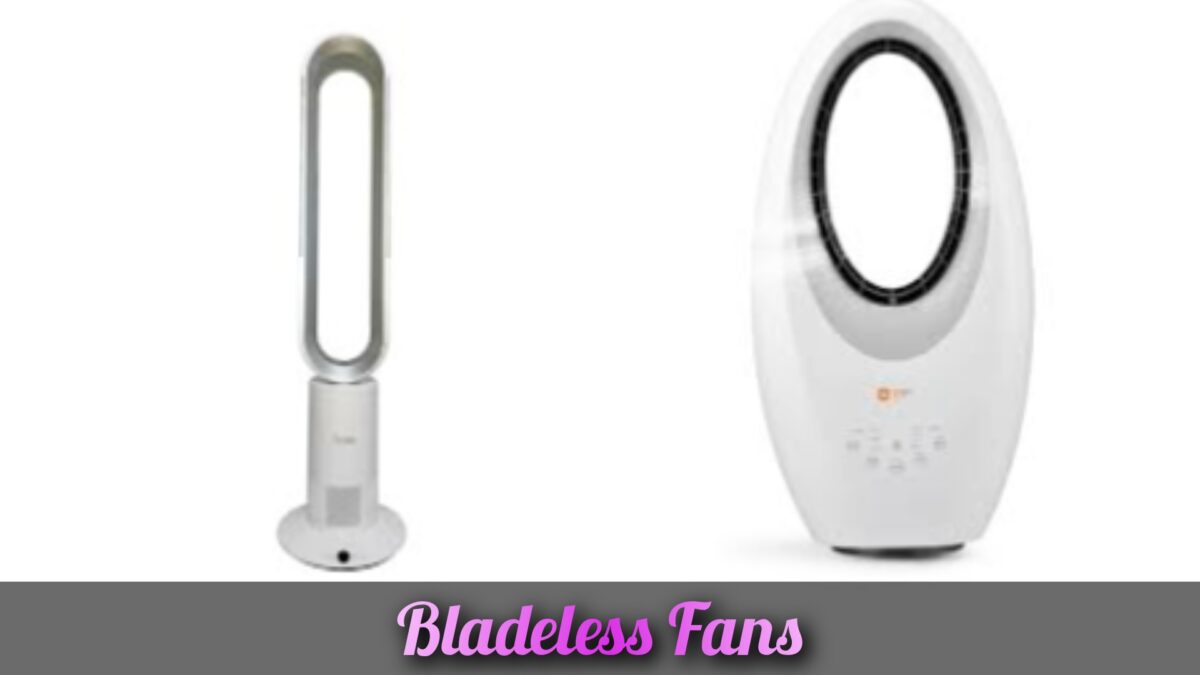
The cool thing about bladeless fans is that they are safer than regular fans because there are no blades that you can accidentally touch. They are also easier to keep clean because there are no blades to collect dust. Bladeless fans make the air flow smoothly and evenly, so you can feel a constant and comfortable breeze.
Bladeless fans are designed to look modern and futuristic. Some of them can be adjusted to make the air flow stronger or softer, and they can even move from side to side. You can use a bladeless fan at home, in your room, or in an office to keep cool on hot days. It’s a fun and safe way to have a cool breeze around you!
17. USB Fan:
A USB fan is a small and portable fan that can be powered by connecting it to a USB port. USB ports are found on devices like computers, laptops, and power banks. The fan is designed to be easy to carry around and use wherever you have a USB port available.
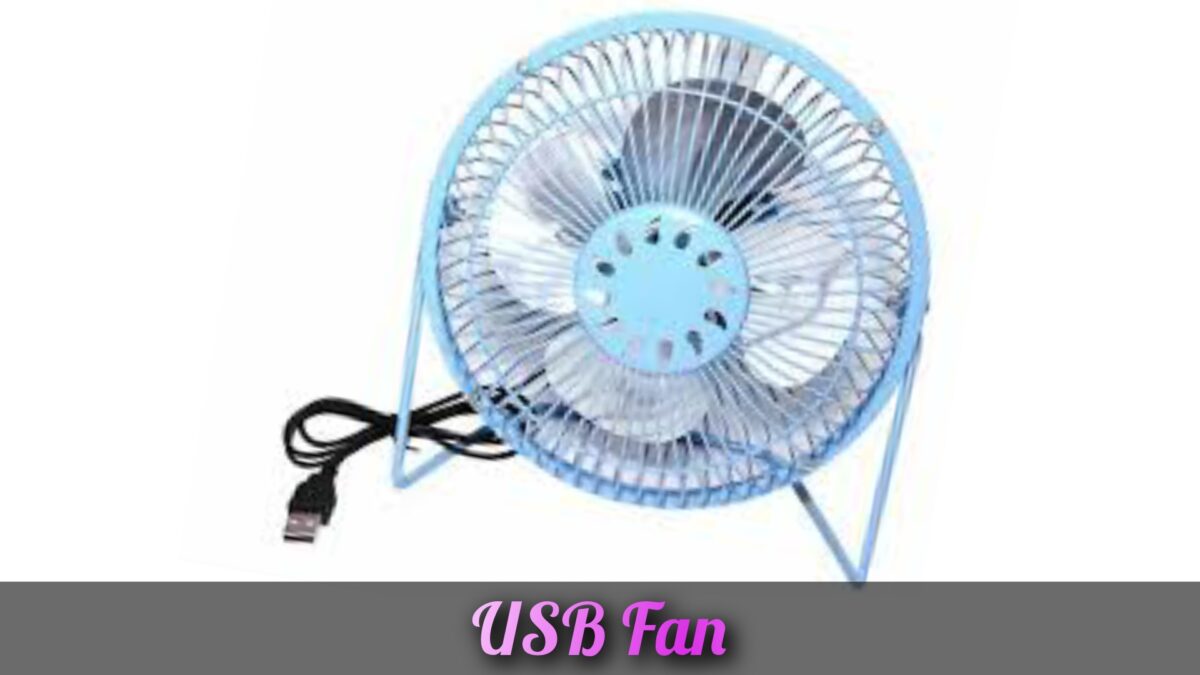
USB fans are great for personal use when you want a bit of cooling in places where a regular fan may not be practical. They are commonly used on desks, in offices, dorm rooms, or even while traveling. You can adjust the position of the fan by bending its neck or using an adjustable stand, so you can direct the airflow exactly where you want it.
These fans are usually not very strong, but they can provide a gentle breeze that helps you feel cooler in a small area. They are designed for personal use, so they’re not meant to cool down a whole room. Some USB fans have extra features like different speed settings, LED lights, or even built-in humidifiers
18. Vintage Fan:
A vintage fan is an old or classic fan that was made in the past and is special because it reminds us of earlier times. Vintage fans can be different types, like ceiling fans, table fans, floor fans, or desk fans. They were often made of metal and had cool designs and patterns on them.
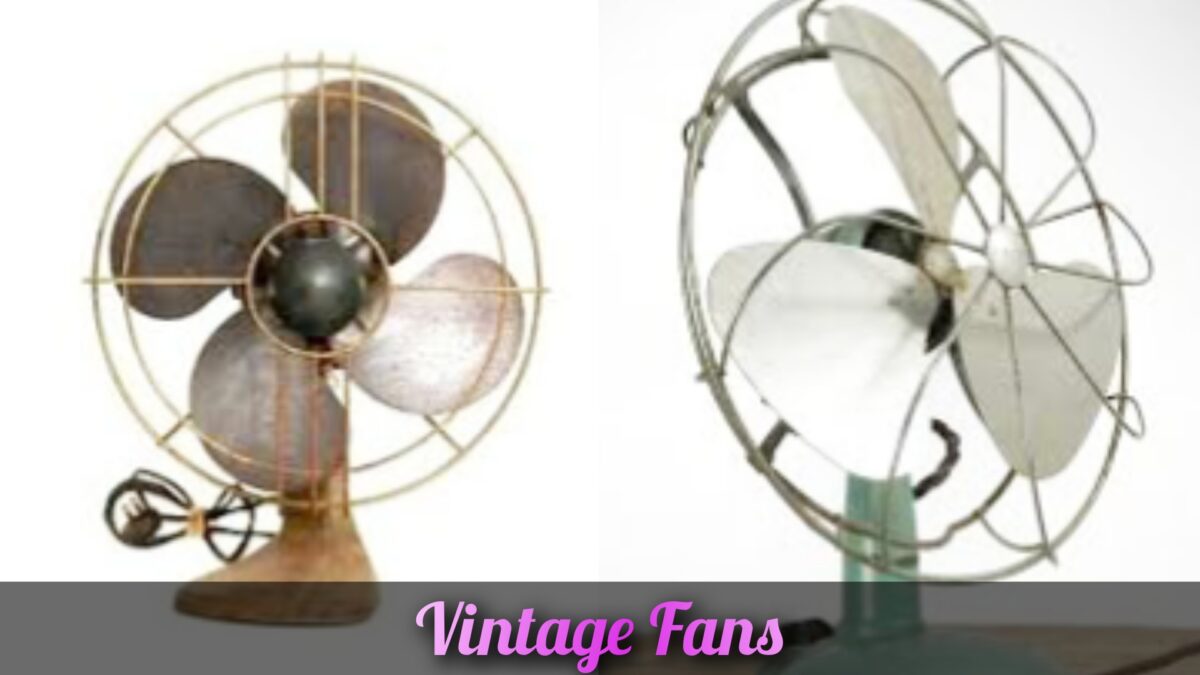
Vintage fans used electricity to work and had special motors inside them. Some fans were even powered by hand or used belts to spin the blades. People who like vintage fans enjoy collecting them and sometimes fixing them up to make them look nice and work well again.
You can find vintage fans in places like old stores, online shops, or even at auctions. It’s important to remember that when using old electrical things, like vintage fans, we should be careful and check if everything is safe before using them.
